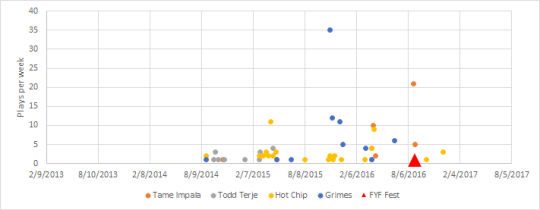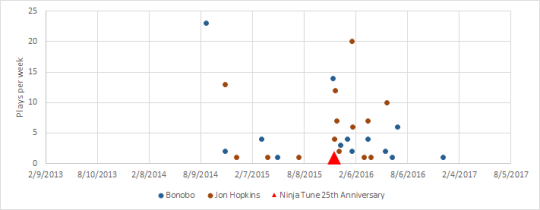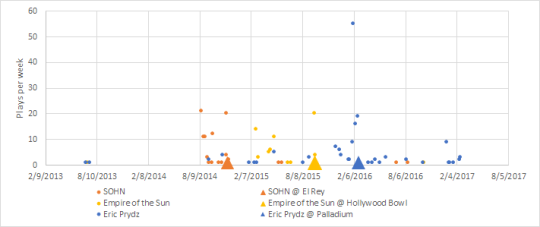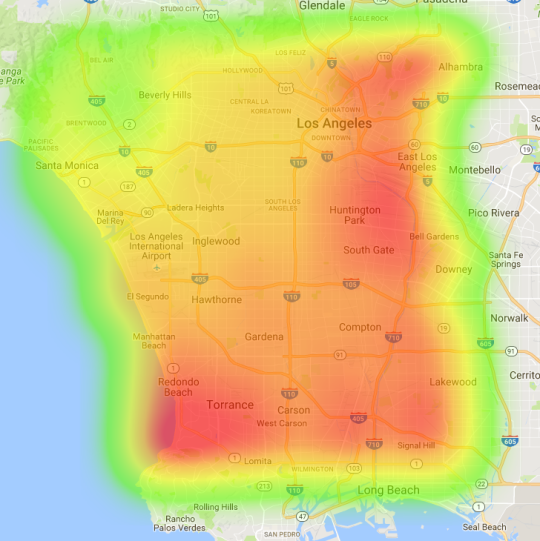Scrobbling through the years
Spotify lets your hook up your last.fm account to keep track of what music you listen to. I used a last.fm to csv service someone put together to grab my data, then sqlite DB browser to run queries on it.
The first thing I did was get a list of the top played artist each week as long since July 2013, when I started keeping this data (summary/freqArtist.csv, on the github repo). Not a lot stands out just looking at that, but then I sorted the top artists by how many times they were the top artist of the week (summary/topArtists.csv).
List of artists with >1 week on the top-artist-of-the-week list:

This is arguably a list of my “favorite” artists, since I both listened to them a lot– enough to be top of the week– and they stood the test of time– being listened to over the span of several weeks. And I think the list is pretty accurate.
Next, I took a look at how much I listened to a few artists before/after seeing them live.



I listened to some artists a lot leading up to the show, then much less immediately after (SOHN, Tame Impala), some that I didn’t listen to much before, then a ton after (Bonobo, Jon Hopkins), and some that I listened to for months before and months after (Eric Prydz, with some serious cramming right before the show).
The .db and ancillary files are on github if you want to see how I did this or judge my music tastes. I had to do a little manipulation of the raw last.fm data, since sqlite didn’t like the way last.fm formatted datetime (see queries/songs2.sql for how I created a view that solved this).





